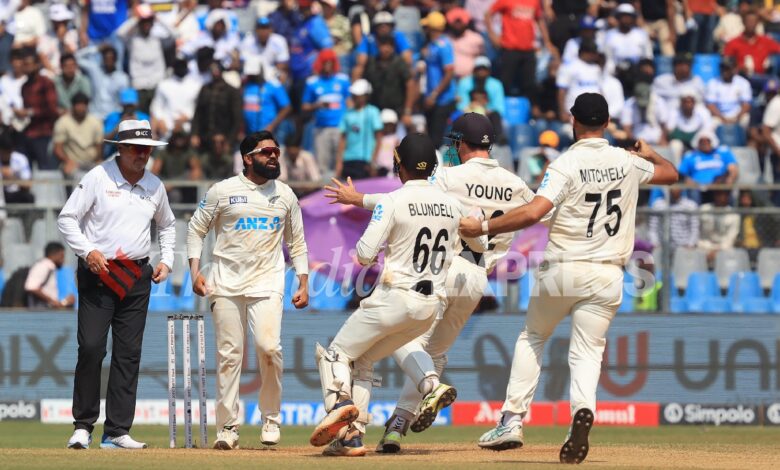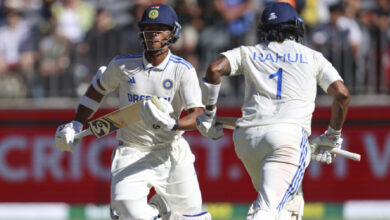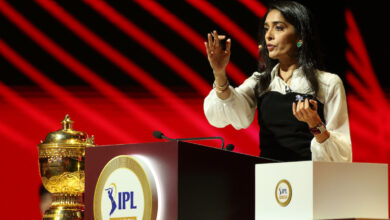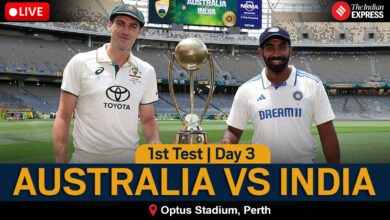India vs New Zealand: How a small country in the southern Pacific regularly punches above its weight in sport | Cricket News

A worm in the Tasman Sea or a half-eaten mutton chop in the Pacific, as a comedian in a tourism video featuring former prime miner Jacinda Ardern puts it. The inventors of the egg-beater, the country where the Lord of the Rings trilogy was filmed. New Zealand can both baffle and surprise.It is a country with a population of 5 million, spread out over a lakh square miles. Its population is one fourth that of Mumbai; its span roughly as much as Uttar Pradesh.
Yet, size and strength have not prevented them from enjoying sporting success for several decades. On Sunday, its cricket team consigned India — a country of 148 millions as head coach Gautam Gambhir frequently asserts — to its first series whitewash at home. It had earlier vanquished them to claim the World Test Championship mace. New Zealand have reached more semi-finals in 50-over World Cups than any other team. All with a talent depth of one lakh regered cricketers. India, Australia and England have four times the number.
Significant dates ✍🏼
The first team in hory to win a three match Test series 3-0 in India. #StatChat #INDvNZ #CricketNation #Cricket 📷 = BCCI pic.twitter.com/Ql7F12GtZj
— BLACKCAPS (@BLACKCAPS) November 3, 2024
It’s a classic case of sporting exceptionalism. Or as Daryll Mitchell put it “New Zealand doing New Zealand things.” The county’s success across different sports is wildly disproportionate to its population. In rug union, the All Blacks are the undisputed powerhouse, having won 80 per cent of their games this century.
At the Paris Olympics, they finished 11th on the table with 10 gold medals. In their last of the two football World Cup appearances (1982 and 2010), they returned undefeated and held then world champions Italy to a draw. The White Ferns were crowned world T20 champions too. New Zealand have stamped their footprints in most sports in the world.
An outdoors lifestyle clearly plays a role. Great emphasis at schools is placed on the ability to run, jump and throw. More than half of children will represent their school in a competitive sport in a single year. For instance, Kane Williamson featured in a host of sports, before embracing cricket seriously. Tim Southee had almost picked rug over cricket.
But there are more cultural, horical and geographical reasons too. Says John Syms, a social science teacher at the Tauranga Intermediate College: “As a nation, we were colonised, and it was a way for us in our isolation to show the world that we could be successful, we could beat the mother country, England.”
Attention to detail
There’s also pragmatic planning and careful funding. For instance, athletics received a significant funding boost at the end of 2020 from High-Performance Sport New Zealand, lifting it back into Tier 1, alongside rowing, sailing and cycling. Suddenly there is a surplus to go towards travel, coaching and more competition. “It’s not where athletes are born, but made,” says Keith Harvey, a staff at the Waikato University High-Performance Centre in Hamilton. “It is where all the budding athletes are taken to, where their international leaps begin,” he says.
Cricket has welcomed outsiders too. Neil Wagner, Glenn Phillips and Devon Conway migrated from South Africa for better opportunities. BJ Watling landed in the country in his teens with his mother. Colin de Grandhomme came from Zimbabwe, assant coach Luke Ronchi from Australia. In the domestic circuit, there are cricketers from England and the Caribbean. Integration is the essence of the country and it reflects in sport.
New Zealand players look back at their rare feat at Wankhede 👏#WTC25 | #INDvNZhttps://t.co/W6FWjID510
— ICC (@ICC) November 3, 2024
xxx
The nursery of New Zealand cricket is the Hawke’s Bay drict, near the southern tip of North Island. There’s no New Zealand cricketer in the last 30 years who has not attended the Hawke’s Bay cricket camps in the summer.
It started 45 summers ago as a fairly simple cricket camp for kids from 12 teams. This year, it attracted around 150 teams and 2,000 cricketers in various age-groups from across the country. Together, they played 450-odd games spread across 20 grounds from Napier to Hastings. From Ross Taylor and Williamson to Southee and Tom Latham, there is no cricketer that has not featured in the tournament.
Matthew Sinclair, who scored a double hundred on Test debut, is one among them. “It’s a pathway, for sure. I remember one team we had here a few years ago had Doug Bracewell, Kane Williamson and Trent Boult in it,” he says. Among others to have played in the camp are Ben Stokes. Ross Taylor, Will Somerville, Jamie How, Jeetan Patel, Jesse Ryder, Peter McGlashan, Jacob Oram, Sara McGlashan, Amelia Kerr and Sophie Devine. “At one point of time, at least everyone had played this tournament,” says Sinclair. And understandably, regional selectors and scouts come flocking.
Some were so smitten the place that they settled down here. Like former openers Mark Richardson and Mark Greatbatch, who reside in Napier, not far from the McLean Park, the international ground. So has Ryder. “If you take the number of ex-Black Caps who are from or settled in Napier, you can make a strong all-time New Zealand XI,” chuckles Sinclair.
Raw emotions on display post a horic series win 🤩#INDvNZ | #WTC25 pic.twitter.com/QGpuRM35pe
— ICC (@ICC) November 3, 2024
Sports culture
Like Napier, the cities are small and compact, yet replete with sporting infrastructure. For instance, Mount Maunganui, the hometown of Williamson and Boult in Tauranga, has a boutique cricket stadium, two rug grounds that overlook it, the Waikato High-Performance Centre, a glening blue astroturf for hockey, and a synthetic track for athletics. Roll down the cobblestone streets, and one bumps into the Yachting and Sailing Club.
Similarly, Chrchurch is home to the Hadlees and Lathams; John Wright and Glenn Turner too reside here.
xxx
In the mid-90s, an elaborate plan was initiated to revive the country’s cricket. A new governance structure was created —effectively, the exing provincial directors, who represented the six provinces, voted themselves out of exence, replaced appointments on merit.
Their weakness was their strength too. “As we are small, we can get our whole country working towards a common goal. Many see this as a weakness but we see this as a strength. The small pool begets a meticulous focus on improving the players New Zealand have,” horian Don Neely, who died two years ago, had told this newspaper.
There was emphasis on giving students a strong sporting structure. Like for instance The Palmerston North Boys High School, where Taylor and several other Black Caps studied. “Once we spot talent in a boy, we ensure that they don’t slip out of the system. He is provided all the necessary exposure and guidance,” says Paul Gibbs, the physical education teacher of the school and Taylor’s mentor.
So, rather than viewing their isolation and small population base as weaknesses, it fuels them to maximise their resources and to collaborate across all sports. Under the Sport NZ’s Coach Accelerator Programme, the head coaches from all New Zealand national teams are regularly brought together to exchange ideas of best practice.
As significantly, the adminrators were careful in not getting into a rat-race with the rest of the cricketing world. Quite early, they realised it was foolish to go for a glamorous T20 franchise league post the success of IPL. “We clearly didn’t have the market to sustain it. So we put the money in the grass-roots, national team and A teams,” he says. The decision seemed wise as several domestic T20 leagues, like the Global T20 league in South Africa and the Sri Lanka Premier League, flopped.
Some people called it conservative, but in hindsight, it turned out to be a masterstroke. Neely likened this to Kiwi resourcefulness. “We have discovered some useful things in the world, like the egg-beater. It’s a small thing, but you know how useful it is,” he says. The same holds true for their sports too. You could say that there are more sportsmen than sheep in the country.







